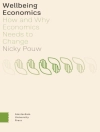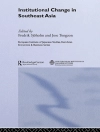It has been firmly established over the last quarter century that cosmic dust plays important roles in astrochemistry. The consequences of these roles affect the formation of planets, stars and even galaxies. Cosmic dust has been a controversial topic but there is now a considerable measure of agreement as to its nature and roles in astronomy, and its initiation of astrobiology. The subject has stimulated an enormous research effort, with researchers in many countries now involved in laboratory research and in ab initio computations.
This is the first book devoted to a study of the chemistry of cosmic dust, presenting current thinking on the subject distilled from many publications in surface and solid-state science, and in astronomy. The authors discuss the nature of dust, its formation and evolution, the chemistry it can promote on its surfaces, and the consequences of these functions. The purpose of this book is to review current understanding and to indicate where future work is required.
Mainly intended for researchers in the field of astrochemistry, the book could also be used as the basis of a course for postgraduate students who have an interest in astrochemistry.
Table of Content
Dust-related chemistry in space; Section 1: Defining the chemical and physical nature of interstellar dust: Remote observations of interstellar dust; Models of interstellar dust; Laboratory studies of candidate interstellar dust materials; Section II: The formation of dust and its evolution in the interstellar media of galaxies: Dust formation in stellar environments; Dust evolution in the interstellar medium; Information from solar system dust; Section III Chemically active interstellar dust: Catalysis on the surfaces of bare dust grains; Ice formation on the surfaces of interstellar dust grains: chemical processing of the ice; Section VI Roles of dust in the Universe: The roles of dust in star and planet formation; Dust in the far distant universe; Dust chemistry and astrobiology; Are we nearly there yet?












